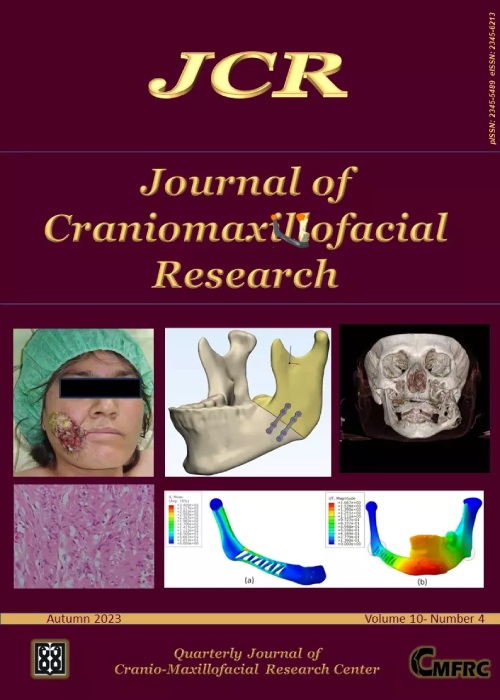Comparison of a novel adhesive system and plate and screw for facial fracture osteosynthesis
In oral and maxillofacial fractures, plates and screws routinely fix fragments until the completion of healing process, which has its own complications in some critical fractures. To overcome this drawbacks bone adhesives are developed for the immobilization of fractured bones.
In this in-vitro study we compared the bond strength obtained by immobilization of the bone fragments using plates and screw and new adhesive containing BTDMA monomer.
In this experimental in-vitro trial, bone fractures were simulated in bovine’s mandibular bone using an electrical saw. The bone fragments were randomly allocated in different groups and were immobilized with either plate and screws and adhesive containing 0, 10, 15% BTDMA. After 24 hours tensile bond strength was calculated using universal testing machine. One-way ANOVA and Tukey post hoe test were used for statistical analysis.
Mean (±standard deviation) of tensile bond strength of bone fixation using adhesive containing 15% (W/W) BTDMA monomer were 176.0 (±18.89) N. These values were 149.1 (±23.88) N for adhesive containing 10% BTDMA; 102 (±17.99) N for the base adhesive and 278.9 (±24.12) N for the screw and plate technique. Significant differences were found regarding bond
strength of bone fixation in 4 groups using bone adhesives or plate technique (P<0.001). The highest bond strength was recorded for the plate group and the least was related to the base adhesive. Significant differences existed between all bone adhesives as declared by paired comparison (p<0.05).
Despite the lower bond strength in adhesive groups in comparison with screw and plate, with regards to possible complications of screw and plate technique, it seems bone adhesives containing BTDMA monomer can be used for bone fragment fixation. However, bond strength is just one of the numerous properties that an adhesive should have and more studies must be done on these kinds of adhesives.
- حق عضویت دریافتی صرف حمایت از نشریات عضو و نگهداری، تکمیل و توسعه مگیران میشود.
- پرداخت حق اشتراک و دانلود مقالات اجازه بازنشر آن در سایر رسانههای چاپی و دیجیتال را به کاربر نمیدهد.


